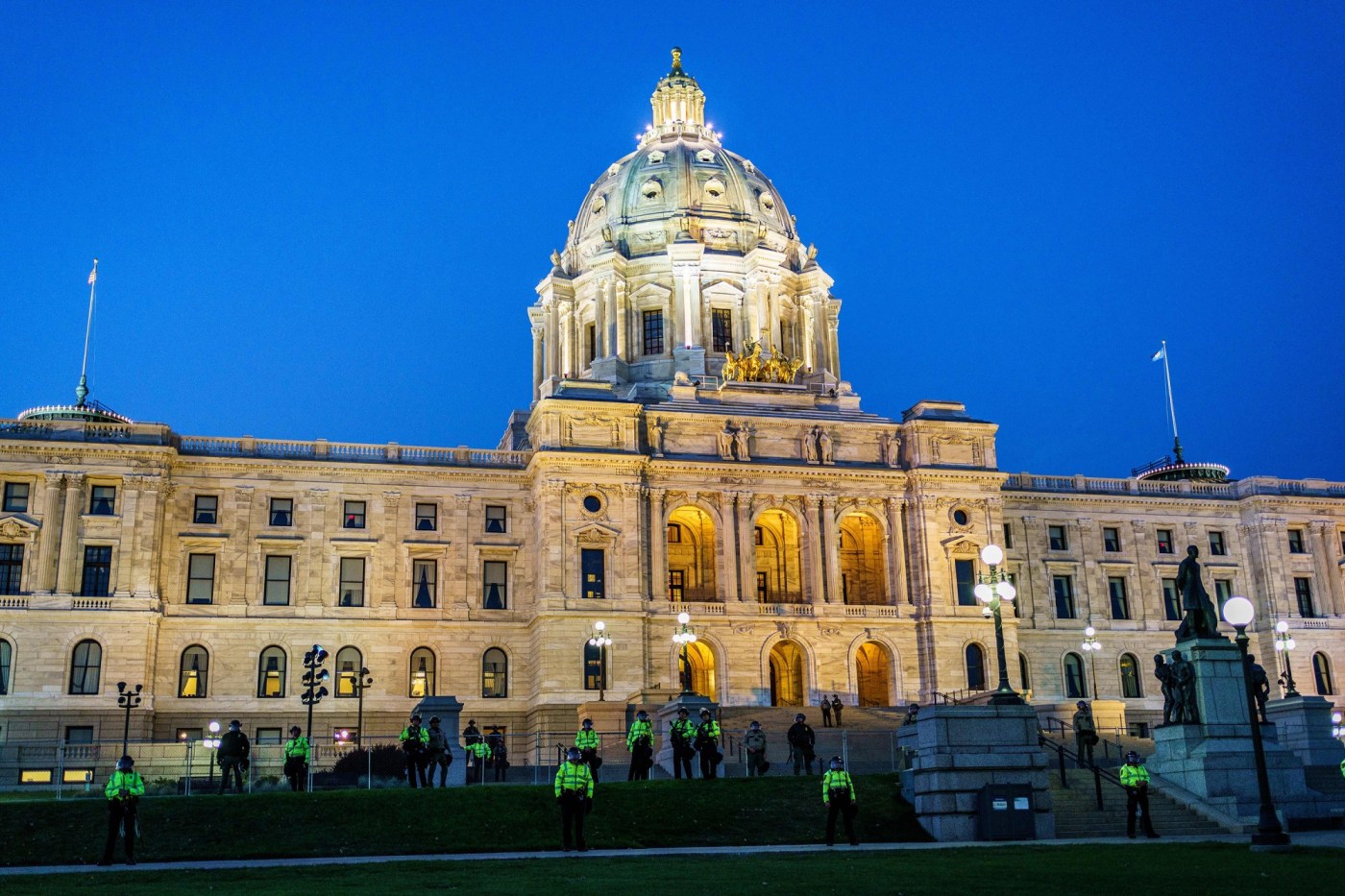
With one week left, what’s happening with the MN budget at the Legislature?
The biggest pieces of Minnesota’s next two-year budget remain in flux with just a week left in this year’s regular legislative session.
Gov. Tim Walz and legislative leaders were to meet this weekend at the governor’s fishing opener in Crosslake, Minn., to continue their negotiations. Walz called it “walleye diplomacy.”
There remain big sticking points in the biggest chunks of state spending: education, health, and human services. They make up about two-thirds of the state budget, and lawmakers still haven’t reached a final agreement on whether the state should find new ways to raise more money, and if so, how.
The next state budget likely will top $60 billion, down from the last budget of more than $70 billion. Legislative leaders and the governor have agreed that there will be billions in cuts. But, again, where and how they’ll reduce spending remains up for discussion.
Walz, leaders from the Senate Democratic-Farmer-Labor majority and Republican minority and leaders of both parties in the 67-67 tied House have been meeting almost daily to hammer out a deal. Though as of this weekend, no overarching agreement had been reached.
Further complicating matters is a growing rift between moderate and more left-leaning DFLers over making exceptions for new benefits passed in 2023, like a paid sick and safe time requirement for businesses.
Budget deadline
Minnesota lawmakers only have until midnight next Sunday to pass a two-year budget that will provide tens of billions of dollars in government funding and prepare the state to tackle a $6 billion shortfall expected later this decade.
If they don’t pass a budget, they’ll have to return to the Capitol for a special legislative session to finish their business, or the state government will shut down on July 1. If recent history is any indication, overtime is likely.
There will be cuts this year, though just how big they’ll be and where they’ll happen is up for discussion as the clock continues to tick. Minnesota is set to have a $456 million surplus for the next two years, but that’ll give way to a deficit in 2028-29.
Walz proposed in his $66 billion two-year budget big cuts to long-term disability reimbursements and nursing home aid, as well as reimbursements for special education. But the Legislature is building a slightly different budget. One thing is certain: all sides aim to cut billions of dollars from the previous budget.
Here’s where they are on key issues:
Taxes
Whether or not there will be new taxes in the next budget is still up in the air.
Walz called for a small reduction to the overall state sales tax in his budget proposal, though he also called for expanding sales taxes to include professional services like accounting and legal services.
As of Friday, the House and Senate tax bills did not include the Walz sales tax changes.
But new taxes are still possible. The Minnesota Senate tax bill contains what backers say is a first-in-the-nation tax on social media platforms that collect user data.
DFL backers say a tax on platforms like Facebook, TikTok and X could bring in more than $300 million over the next four years. The House, which is tied between the DFL and Republicans, does not include that tax in its version of the bill.
On the House side, the tax bill includes a $100 boost to the child tax credit created by the DFL-led state government in 2023. If adopted, it would add to the existing $1,750 per-child credit for people below a certain income level.
If their proposals pass as they currently exist in the coming days, differences between the two will need to be reconciled in a conference committee. Republicans have repeatedly said they won’t approve new taxes.
Republicans say the state grew spending too much in 2023, when DFL-controlled state government increased the two-year budget by nearly 40% to more than $70 billion, used a considerable amount of a record $18 billion surplus and introduced billions in new taxes and fees.
Disability cuts
Walz called for about $350 million in cuts to disability waiver spending over the next two years in his budget proposal. The House and Senate versions of the human services budget do not align with that goal.
Both the House and Senate have passed human services bills that call for around $300 million in cuts in the next two years, though the way they do it will have to be reconciled in a conference committee before they can be passed again and sent to the governor’s desk to be signed into law.
The House version, for instance, makes fewer cuts for nursing homes, while the Senate version relies more heavily on them.
Related Articles
Joe Soucheray: No other governor has tried to pull off this pathetic budget stunt
Gov. Walz encourages legislators, and anglers, to get the lead out
Minnesota Senate OKs new anti-fraud office, but much work remains
Ethics panel deadlocks on complaint against Minnesota Senate President
Letters: ‘Let’s not make it harder to learn,’ Walz wrote. A private school principal responds.
Republicans have said they will oppose major cuts to long-term disability reimbursements and nursing home aid and have instead tried to shift the conversation about the budget toward what they say are growing health care benefits for people in the U.S. illegally.
MinnesotaCare debate
Republicans have been pushing for an end to state-funded health care benefits for people in the country illegally as a way to address a projected future deficit. They have argued that higher-than-expected enrollment in MinnesotaCare benefits may cost the state $600 million by 2029.
Expansion of MinnesotaCare was originally projected to cost the state $200 million, but more than 17,000 enrolled — more than the 7,000 originally predicted when the DFL-controlled state government made the change in 2023.
Whether that’s an issue on which the budget can be balanced is up for debate. GOP projections are based on projected use of services, and so far, the rate has not been close to meeting that level, DFLers and the state Department of Human Services have noted.
Further, DFLers, including Walz, have asserted that people access health care regardless of their immigration status and that providing insurance cuts overall costs in the long run, and that he wouldn’t compromise on providing children health care.
Unemployment insurance cuts
The pre-K-12 education budget, which makes up around one-third of state spending, is another area where budget negotiations have stalled.
Walz had proposed cuts to special-education transportation spending, which Republicans oppose because of its impact on rural school districts, but the main point of contention has been around new unemployment benefits for hourly school employees.
The DFL-controlled Legislature granted hourly school workers unemployment insurance in 2023, and while the state was set to fund it through 2027, school districts would eventually have to pick up the cost.
A few weeks ago, it appeared that DFL and GOP House members found agreement to end the benefit in 2028, despite pressure from labor groups. But the House DFL pulled back from the deal, and an overall agreement on education remained to be seen as of this weekend.
The change of course exposed an emerging rift between the progressive wing of the DFL and the so-called “Blue Dog” caucus of moderates, who have backed opt-outs for smaller businesses on the state’s 48-hour “sick and safe time” requirement they enacted two years ago.
On the back burner
Federal policy changes under President Donald Trump have already led to layoffs at the Minnesota Department of Health. Nevertheless, federal policy changes are not at the forefront of budget negotiations.
A bipartisan group of state lawmakers has sent a letter to Minnesota’s congressional delegation asking them to oppose potential Medicaid cuts under a GOP-controlled Congress, but state planning doesn’t currently account for hypotheticals.
The regular legislative session ends on May 19.
Related Articles
As reading scores fall, states turn to phonics — but not without a fight
At Social Security, these are the days of the living dead
Judge pauses much of Trump administration’s massive downsizing of federal agencies
Treasury secretary calls on Congress to raise or suspend the debt ceiling by mid-July
How the military is dealing with Hegseth’s order to remove transgender troops


